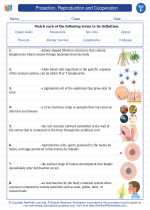Nuclear Fusion
Nuclear fusion is a process in which two light atomic nuclei combine to form a heavier nucleus, releasing a large amount of energy in the process. This process powers the sun and other stars, and has the potential to provide a clean and virtually limitless source of energy here on Earth.
How Nuclear Fusion Works
In nuclear fusion, the nuclei of two light atoms, such as hydrogen isotopes deuterium and tritium, are forced together at extremely high temperatures and pressures. The strong nuclear force causes the nuclei to overcome their electrostatic repulsion and fuse together, forming a heavier nucleus and releasing a significant amount of energy in the form of gamma rays and kinetic energy of the newly formed nucleus.
Advantages of Nuclear Fusion
- Abundant Fuel: Deuterium, one of the fuels for nuclear fusion, can be extracted from water, and tritium can be produced from lithium, making fusion fuel sources abundant.
- Minimal Environmental Impact: Nuclear fusion does not produce greenhouse gases or long-lived radioactive waste, making it a clean and sustainable energy source.
- High Energy Output: Nuclear fusion releases a large amount of energy, and the fuel sources are virtually limitless, making it an attractive potential energy source for the future.
Challenges of Nuclear Fusion
- High Temperature and Pressure: Achieving the conditions required for nuclear fusion, such as the extreme temperatures and pressures found in the core of stars, is a significant technical challenge.
- Containment and Stability: Maintaining the plasma at the required conditions and preventing it from coming into contact with the walls of the containment vessel is a major engineering hurdle.
- Economic Viability: Developing cost-effective fusion reactors that can produce energy at a competitive price compared to other energy sources remains a significant challenge.
Study Guide
Here are some key points to understand about nuclear fusion:
- Define nuclear fusion and identify the primary difference between nuclear fusion and nuclear fission.
- Explain the role of the strong nuclear force in nuclear fusion and how it overcomes the electrostatic repulsion between atomic nuclei.
- Describe the potential advantages of nuclear fusion as a source of energy, including its fuel sources and environmental impact.
- Identify the major technical challenges associated with achieving practical nuclear fusion as a viable energy source.
- Compare and contrast the advantages and challenges of nuclear fusion with those of other energy sources, such as nuclear fission and renewable energy.
Understanding the process of nuclear fusion and its potential as a clean and abundant energy source is crucial for addressing future energy needs and environmental sustainability.
.◂Science Worksheets and Study Guides Sixth Grade. Protection, Reproduction and Cooperation

 Worksheet/Answer key
Worksheet/Answer key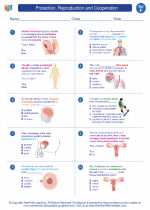
 Worksheet/Answer key
Worksheet/Answer key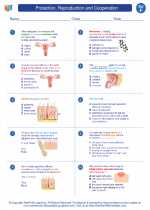
 Vocabulary/Answer key
Vocabulary/Answer key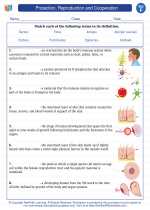
 Vocabulary/Answer key
Vocabulary/Answer key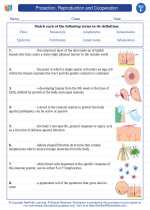
 Vocabulary/Answer key
Vocabulary/Answer key